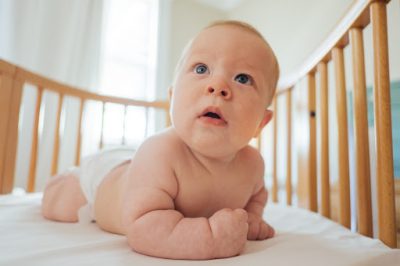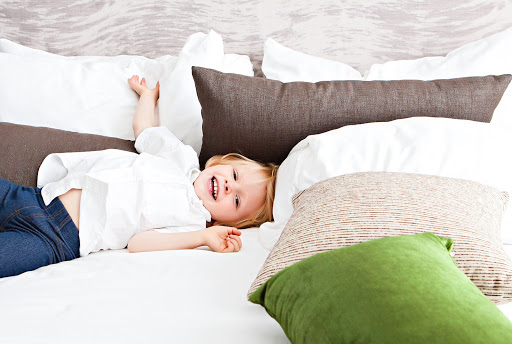Buying the right mattress for your child is more important than you may imagine. Sleep and rest are vital for the child’s development and growth. In fact, studies have shown that the lack of sleep and rest in a child is directly proportional to learning problems, depression, obesity, and general developmental stunting.
Sleep is vital for your child’s overall health for several reasons. Studies show that your vital organs and brain swells during the waking time due to the activities that you are undertaking. You are faced with so much information on a daily basis that you are simply not able to take it all in. Sleep sends immune cells to your brain and organs to reduce the swelling and assist in retaining the information from the day.
In order for your child to get a good night’s sleep, they will need the right mattress to ensure a good night’s sleep. So, we thought we would take a look at what kids mattress you should buy for your child to get the optimum rest.
Is it Age Appropriate?
The first thing you will need to consider when buying a mattress for your child is if it is right for their age group. You will most likely go through at least three mattresses in your child’s life.
Age One to Three
The infant stage will most likely need a smaller, more durable mattress that will fit the cot. The mattress will need to be waterproof to protect it against guaranteed accidents. Lastly, an infant’s mattress will usually be a lot firmer than their older counterparts. These are ideal as their little bones and muscles are developing at a rapid rate, and they need all the support that they can get.
Make sure you measure the crib and make sure you buy a suitable size that is not too high or too small for the crib. A foam or innerspring mattress is your ideal option, but make sure they are not too soft. When it comes to foam, it is easy for it to become too soft and your infant can sink into the bed and possibly be suffocated.
Age Three to Ten
The best options for this age-group are the foam types. They are resilient, hypoallergenic and supportive for the child. They also don’t need to cost an arm and a leg, so that when the child grows out of the bed, you can replace it.
Age Ten to Eighteen
These are now the ages where you can look into a longer-term investment. You can choose to increase the size of the bed and possibly invest in a more expensive mattress. Keep in mind, accidents still happen at a younger age, so protectors are important. 
Is it the Right Price?
Mattresses can vary in price, depending on the size, materials making up the mattress as well as the quality of the mattress. There are a number of factors to consider when deciding on how much you want to spend on a mattress.
- How old is your child? Buying a mattress for a toddler is totally different than for your teenager. Your infant will outgrow the mattress in two years. A toddler will most likely be able to use the same mattress for six to eight years but will need more room for wear and tear. A more expensive mattress can be purchased for a teenager as they are less likely to wet the bed as frequently and they should have stopped jumping on the bed by that stage.
You can expect to pay an average of:
0 years old: $100
2 years old: $150- $350
10-18 years old: $250 -$700
2. Is it an investment? Keep in mind that when you buy a mattress for your child who is over 10 years old, the mattress will need to last for the next six to eight years. So, make sure that you are buying quality in order for it to last longer.
Is it Made of the Right Materials?
It is important to ensure that you do some research before simply going to buy a mattress. There are a number of different types of mattresses on the market, and you will need to ensure that you have one that will suit your child’s unique needs. These are the types of mattresses to choose from:
- Foam;
- Innerspring;
- Natural Fiber;
- Gel;
- Latex;
- Pillow top;
- Water beds;
- Air beds.
The first thing to consider is if your child suffers from allergies. If they do, you should not opt for foam mattresses or natural fibers. Upon buying a new mattress, you will find that the mattress has an unusual, yet persistent smell. This is called off-gassing. Due to it being comprised of synthetic materials, they tend to emit a sharp smelling gas. Do not be too concerned, however, as the gas is not dangerous or deadly in any way.
The second thing to consider is the support that you need for your child. As mentioned, a firm foam mattress is ideal for your infant, but as they get older, their bodies will change and they will need different support. Innerspring can be a great fit for the older child, however, you need to watch out that they don’t start sagging as the springs and coils get old and worn.
You also need to think about how hot the mattress gets. Mattresses like foam and latex can be extremely hot and can land up stifling your child, especially if you live in warmer regions. Innersprings are more adept to the colder areas, and can always be covered by a warm mattress protector during the colder months.
The last thing to check off is whether the mattress is durable. You will need to keep in mind that throughout the infant to the ten-year-old stage (and even sometimes beyond) bedwetting will be a frequent problem that you will have to deal with. Make sure you get one that will cope with this wear and tear and that will be easy to clean. You can always also opt for a mattress protector to cover the mattress and avoid these accidents.
Wrapping Up
Your child’s growth and development is one of the most important aspects of your life and ensuring that they are getting the proper sleep at night will make the difference between a bright and alert child. Apart from the mattress and bed, make sure that you have a strict routine for your child. Getting to bed at a certain time, and getting the right amount of hours of sleep will ensure that your child has a regular and uninterrupted sleeping pattern.



















